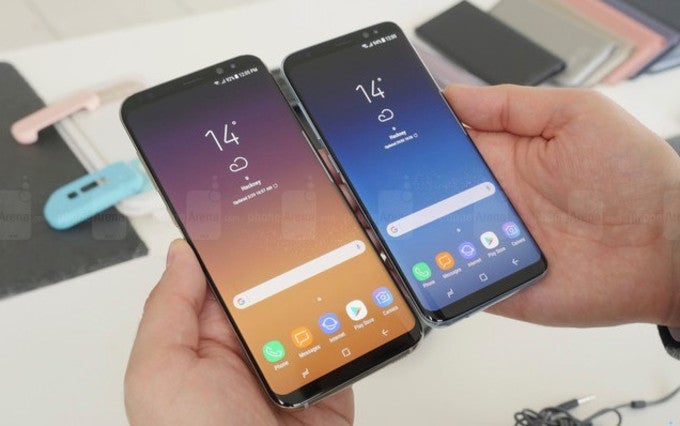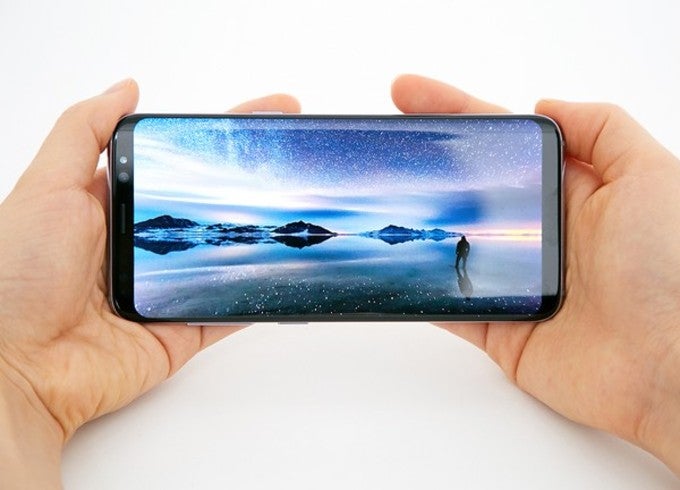Samsung Galaxy S8 vs Samsung Galaxy S8+: What are the differences and which one is for you?

Well folks, the most anticipated high-end Android handsets of 2017 are finally official! Samsung just announced the Galaxy S8 and Galaxy S8+ - two premium smartphones with a radical design and a host of interesting features. The pair looks fantastic and both devices will undoubtedly sell like hotcakes, but despite the many observable similarities, there are some key differences between the two that could influence your buying decision if you're thinking of committing to a purchase.
Fret not, because we're here to help with this tough choice. In this article, we've gathered information that will aid you in determining which handset is more suitable for your needs. You'll see all the specs and features that make each phone unique, but first, we'll start with an overview of the things that the Galaxy S8 and Galaxy S8+ share. Without further ado, let's dig in!
Similarities between the Galaxy S8 and S8+
As we mentioned earlier, the two devices have so much in common, they're barely distinguishable from one another. As with virtually any other flagship duo, both the Galaxy S8 and S8+ sport the same design, and it's not difficult to see why the manufacturer takes so much pride in it. The whole "curved edges" approach that we've seen on previous Samsung flagships is also present here, but this time, the outlook is hugely enhanced by the rather big reduction of bezel size in addition to the curved corners on the top and bottom. The outlines of the new Galaxy S models are quite a sight, and Samsung even considers the handsets as a whole new class of "infinity phones".

The almost non-existent bottom bezel is the cause for the disappearance of the physical home button, and at the top, one can see that there is an iris scanner positioned next to the array of sensors. Both the S8 and S8+ come with the new AI assistant Bixby, and Samsung has even implemented a dedicated physical button for the knowledge navigator. The back panels are made out of plastic which allows for wireless charging, and this year, the fingerprint scanner can also be found on the back, right next to the camera sensor. IP 68 certification is present on the two devices. As for color options, the handsets will come in Black, Silver, Orchid Gray, Blue, and Maple Gold, but customers in the US will only have access to the first three variants.
In terms of hardware, the pair is nearly identical - Exynos 8895 chipset (Snapdragon 835 for the US), 4 GB RAM, and 64 GB internal storage + micro SD support. You'll find a 12 MP main sensor on the back, while the front selfie cam has been bumped up to 8 MP. On the software side, you can expect the duo to come with Android 7.0 out of the box.
It is obvious that the resemblance between the Galaxy S8 and S8+ is truly great, but let's take a look where things start to diverge...
Dimensions and display size

So, let's start with the most obvious difference - screen size. While both phones boast sizable displays, the larger S8+ model comes with a ridiculous 6.2-inch screen which would have made it into a humongous phone, were it not for the innovative design from Samsung. Still, the S8+ is a pretty big handset, so if you're not that insistent on getting the maximum possible screen real estate, the smaller version would probably suit you better. The Galaxy S8 has a "modest" 5.8-inch display, which should be more than enough for most people. The displays on both devices are Quad HD+ (2960 x 1440), so the smaller screen boasts a higher pixel density (570 ppi versus 529 ppi on the S8+).
Naturally, when there are differences in display sizes, one can also expect the phones to have different dimensions. The smaller S8 measures at 148.9 x 68.1 x 8.0 mm, which is a quite of an achievement, considering that this makes it only slightly larger than the iPhone 7 (4.7-inch display). The Galaxy S8+ stands at 159.5 x 73.4 x 8.1 mm - this makes the handset marginally bulkier than its predecessor - the Samsung Galaxy S7 edge.
Battery capacity

Alleged image of the S8+ battery
As for the power cells on the two new devices, I won't surprise you by saying that you can expect a larger one on the bigger 2017 flagship model. The power bank on the Galaxy S8+ has a capacity of 3,500 mAh, while the smaller S8 has to make due with a 3,000 mAh battery. While these numbers are not negligible in any sense of the word, it will be interesting to see if they will able to support the huge screens on both handsets for a sufficient amount of time. The new processors will also play a huge role in this task, so we can barely wait to put these modern smartphones to the test.
Price and release date
From all the information above, we can safely state that the Samsung Galaxy S8 and S8+ are going to be great. Actually, you've probably known this from way back, as there was no shortage on leaked information and materials. The prices for the two flagships are going to be equally great, just not in the sense we've all hoped for.
The S8 should sell for about $750 with most US carriers, while you can get the S8+ for $100 more, at $850. Ouch! At the end of the day, we're talking about the most advanced Android smartphones for the first half of 2017 (at least), so it is kinda expected for them to go for a premium.
The handsets will officially hit the shelves on April 21 in the US (April 28 globally), and Samsung is prepared to sweeten the deal for anyone who wishes to pre-order. You can start doing so on March 30th at AT&T, Verizon, T-Mobile, Sprint, Cricket Wireless, US Cellular, Straight Talk Wireless, and you'll be rewarded with a free Gear VR headset and a controller for your support. Additionally, each model will also ship with a pair of AKG-branded earphones (worth $100), irrelevant of the purchase date.
Follow us on Google News









![A new Android bug is making it impossible to install new apps. Are you affected? [UPDATE]](https://m-cdn.phonearena.com/images/article/176703-wide-two_350/A-new-Android-bug-is-making-it-impossible-to-install-new-apps.-Are-you-affected-UPDATE.webp)

Things that are NOT allowed:
To help keep our community safe and free from spam, we apply temporary limits to newly created accounts: